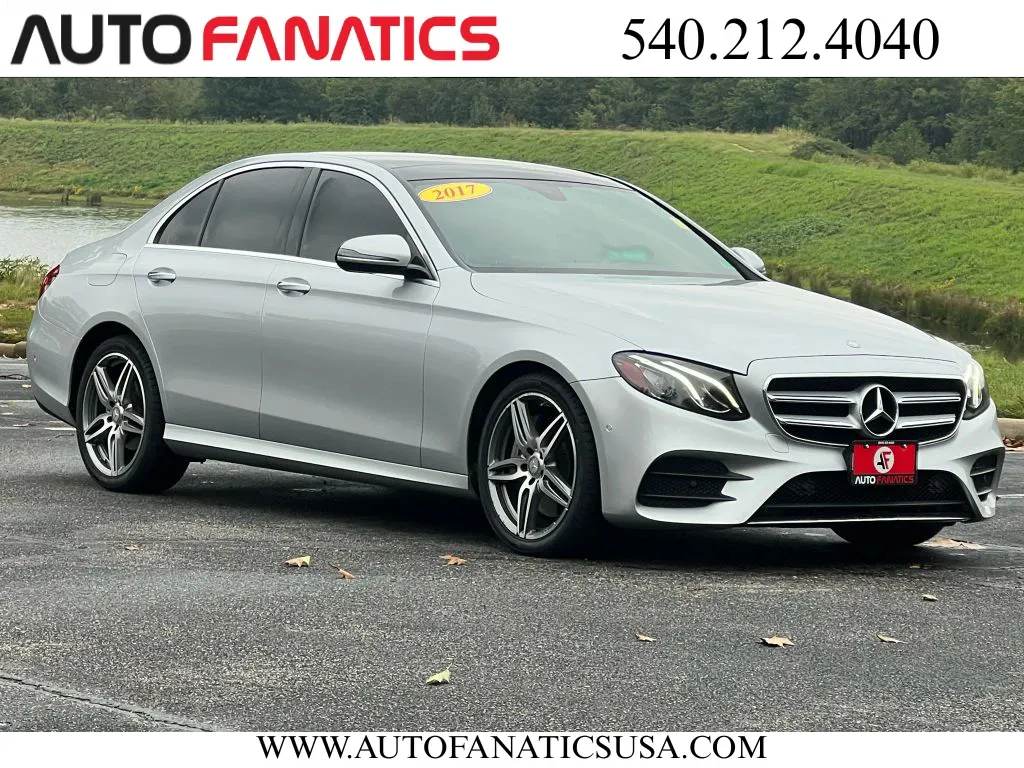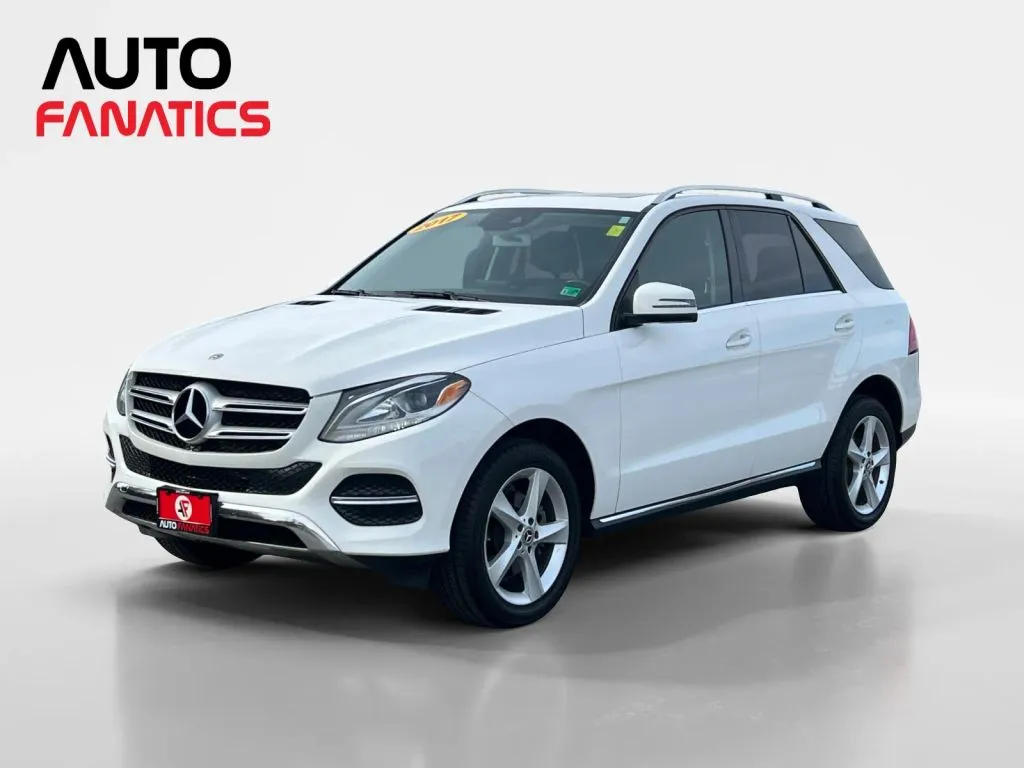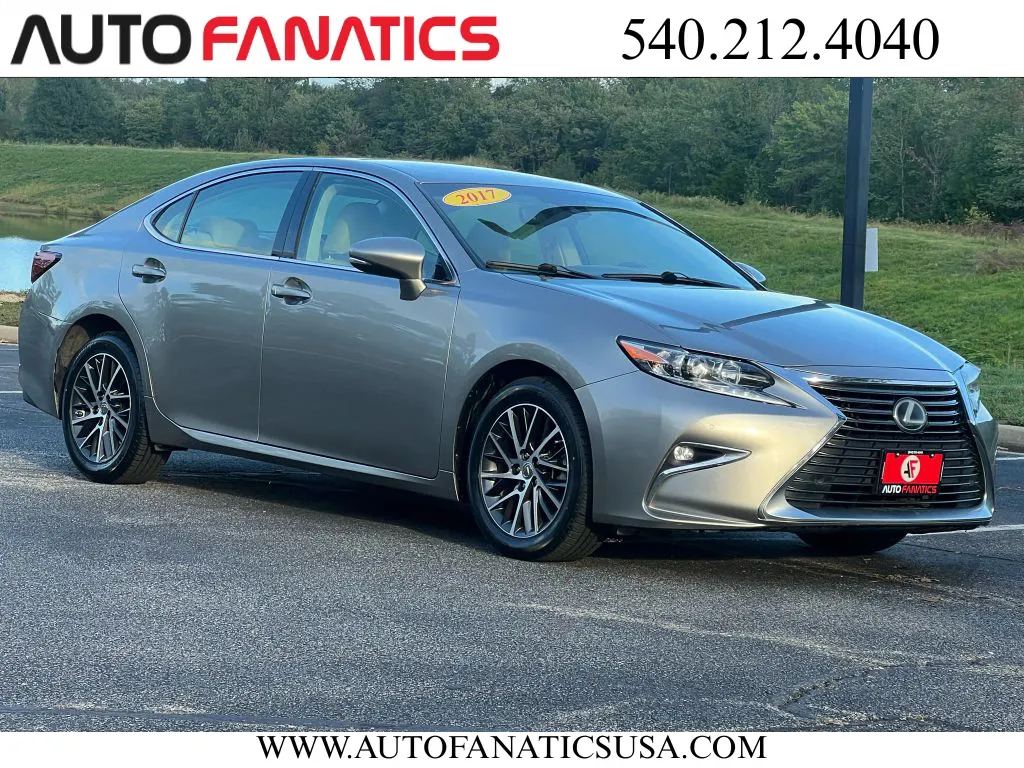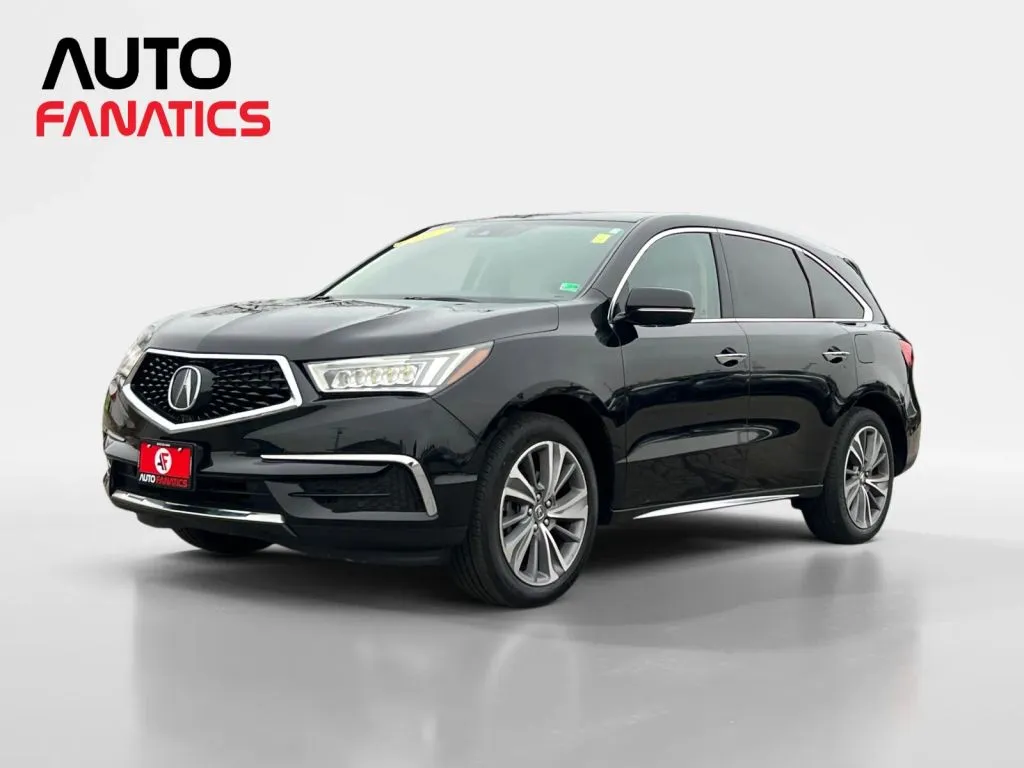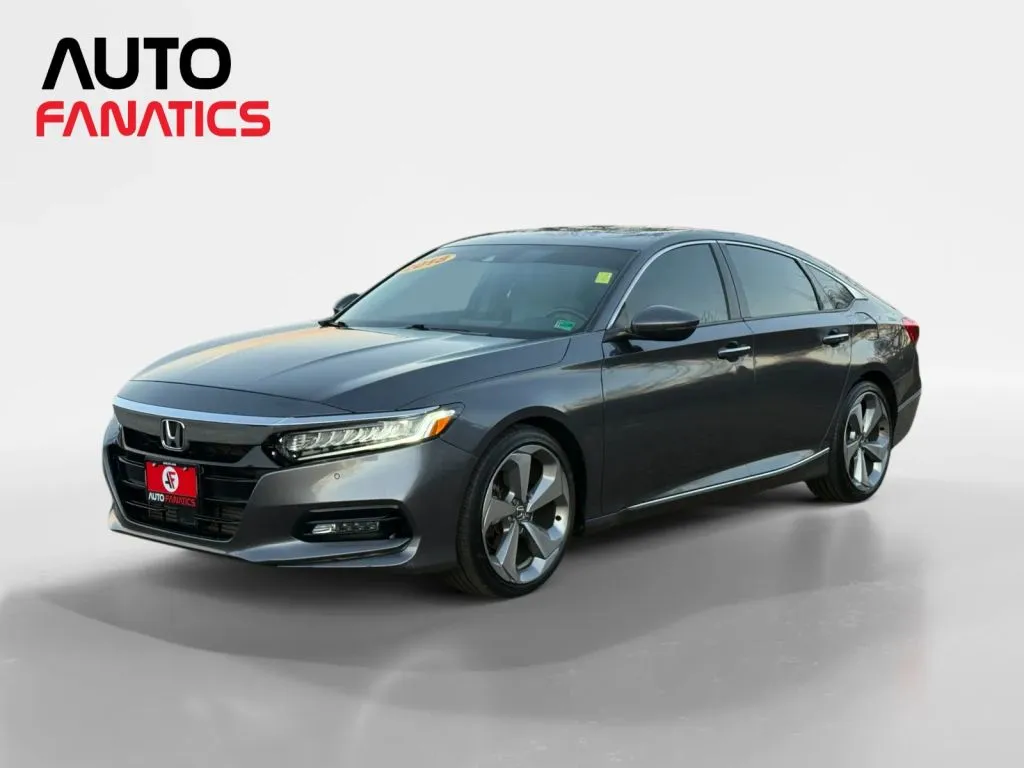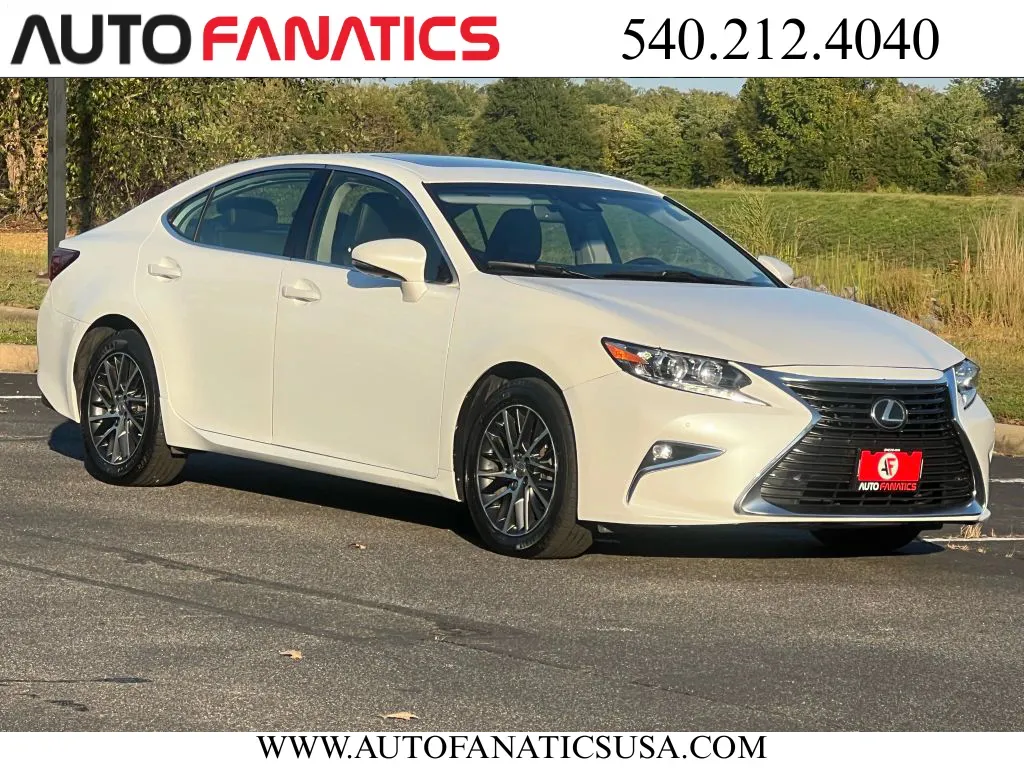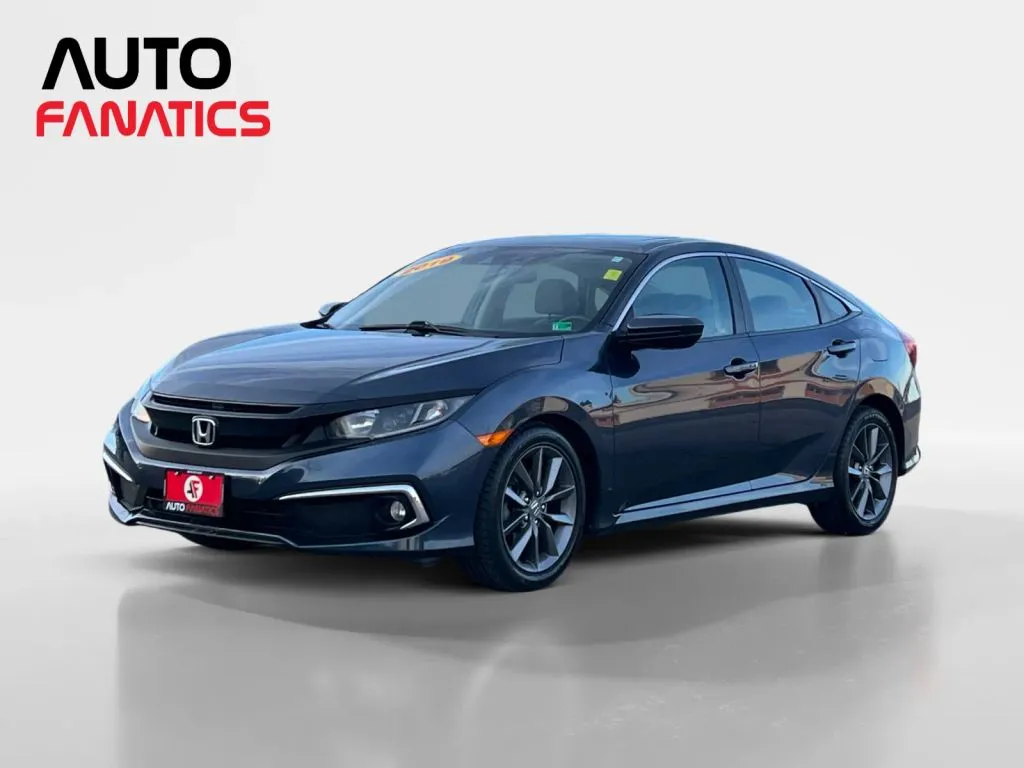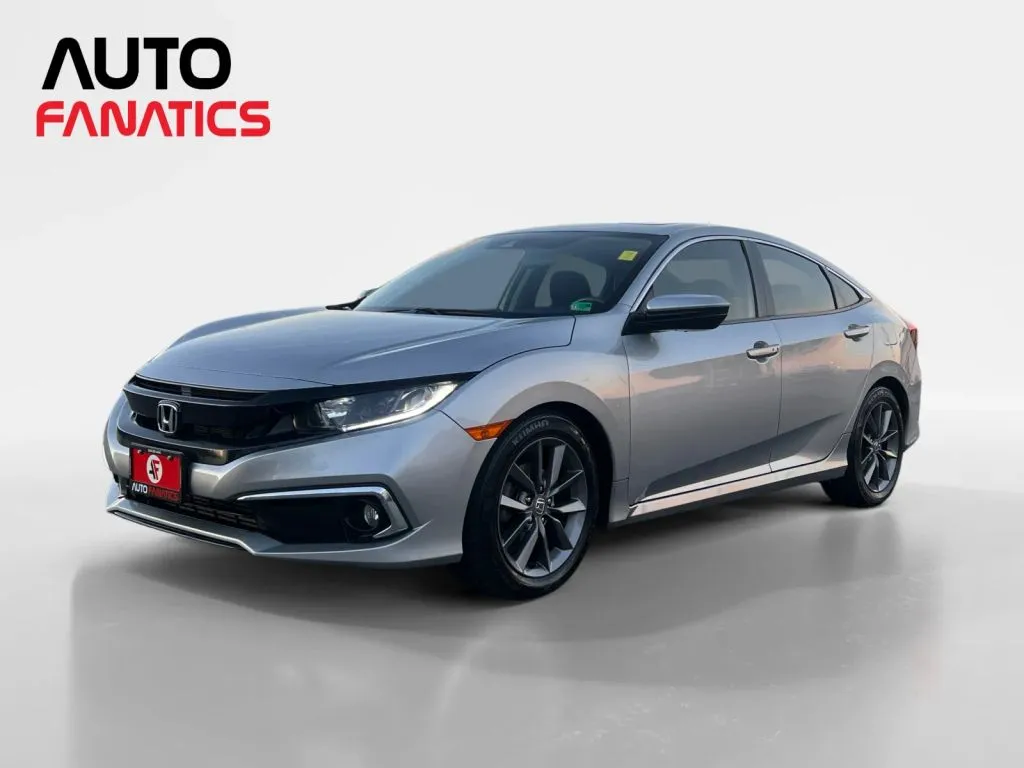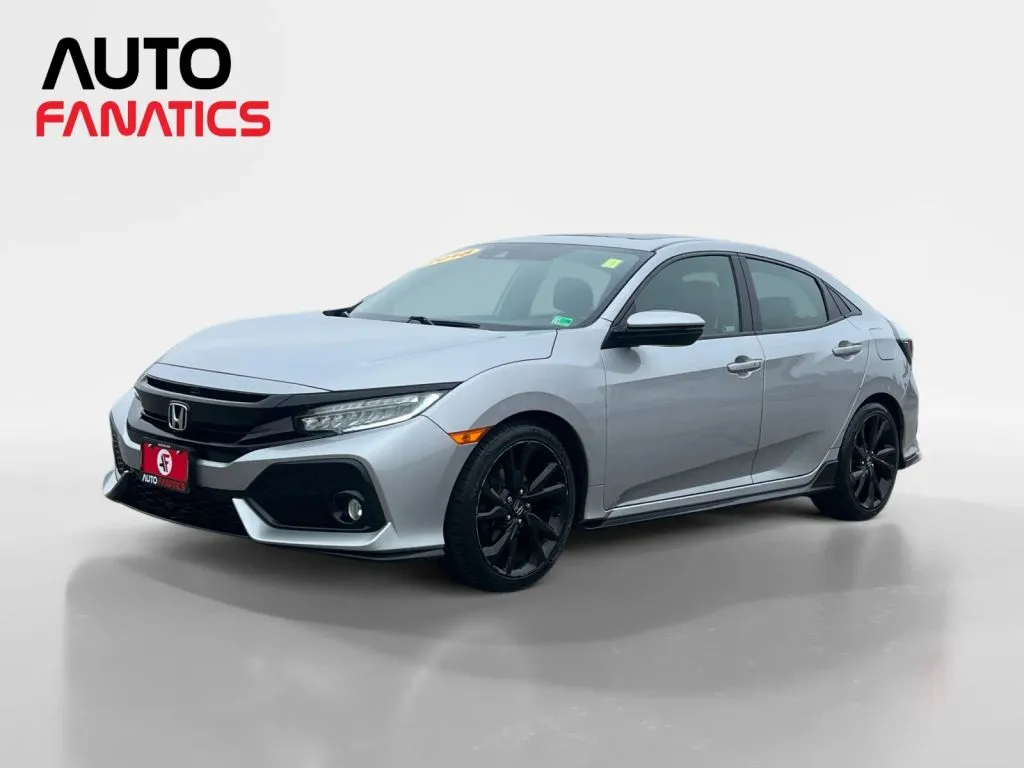Comparing Used Car Loans: Get the Best Rates & Terms
One of the biggest mistakes people make when buying a car is focusing entirely on the vehicle and the monthly payment, while overlooking the loan itself. It’s an easy trap to fall into. You’ve found the perfect SUV for your family, and you just want to get the keys in your hand. But the details of your financing can cost you thousands over time if you’re not careful. A smart purchase involves both the right car and the right loan. This guide is here to help you avoid common pitfalls and make an informed choice. We’ll walk you through the essentials of used car loans so you can secure a great rate and a payment plan that truly works for your budget.
Key Takeaways
- Do Your Homework Before You Shop: Check your credit report for accuracy and get pre-qualified for a loan. This establishes a realistic budget and gives you negotiating power before you even visit a dealership.
- Compare Loan Offers to Secure the Best Rate: Don't just accept the first financing option you're given. Compare the APR (Annual Percentage Rate) from different lenders to find the loan with the lowest true cost over time.
- Look Beyond the Monthly Payment: A low payment can hide a long loan term with high interest costs. Read your agreement carefully for any hidden fees and factor in future expenses like insurance and maintenance to understand the total cost of ownership.
What is a Used Car Loan?
Thinking about buying a pre-owned vehicle? A used car loan is one of the most common ways to make it happen. Simply put, it’s a loan from a financial institution that helps you cover the cost of a car that isn't brand new. You borrow the money you need and then pay it back over time in manageable monthly installments. This makes getting behind the wheel of a quality used car, truck, or SUV much more accessible without having to pay the full price upfront. It’s a straightforward financial tool designed to get you on the road sooner.
How Does It Work?
When you take out a used car loan, a lender—like a bank or credit union—provides the funds to purchase your vehicle. In return, you agree to repay that amount, plus interest, through fixed monthly payments over a set period, typically between two and seven years. The lender holds onto the car's title as collateral until the loan is fully paid off. Once you make that final payment, the title is all yours! This process allows you to drive your car home while spreading the cost over time. You can use a car loan calculator to estimate what your monthly payments might look like and find a budget that works for you.
Who Offers Used Car Loans?
You have several options when it comes to finding a used car loan. Traditional banks and local credit unions are common choices, and many online lenders specialize in auto financing. Dealerships are another great resource. Here at Auto Fanatics, we work with a network of trusted lenders to find competitive rates for our customers, saving you the time and effort of shopping around yourself. We simplify the process so you can focus on finding the perfect car. You can even get pre-qualified online right now to see where you stand before you even visit our lot in Fredericksburg.
Common Myths, Busted
Let’s clear up a couple of common myths about auto loans. First, some people believe you should only apply with one lender to avoid hurting your credit. In reality, credit scoring models usually treat multiple auto loan inquiries within a short period (like 14-45 days) as a single event. Shopping around is smart and can help you find the best deal. Another myth is that prequalification guarantees approval. While getting pre-qualified is a fantastic first step that gives you a solid estimate of what you can borrow, it isn't a final loan offer. The lender will still need to verify your information before giving the final green light.
What Determines Your Loan Rate?
When you apply for a car loan, the interest rate you’re offered can feel a bit like a mystery. But it’s not a random number. Lenders look at a specific set of factors to decide how much risk they’re taking on by lending you money. Think of it as your financial snapshot—it tells them how likely you are to pay back the loan on time. Understanding these key elements puts you in a much stronger position to secure a great rate. Let’s break down exactly what goes into that calculation.
How Your Credit Score Factors In
Your credit score is one of the most significant pieces of the puzzle. Lenders use it as a quick way to gauge your financial reliability. A higher score typically signals to them that you have a solid history of managing debt, which often translates to a lower interest rate. They’ll also look at your broader credit history, your income, and your debt-to-income ratio (how much you owe versus how much you earn). Don’t worry if your score isn’t perfect; there are always options. The first step is knowing where you stand so you can confidently get approved for a loan that fits your budget.
The Importance of Your Down Payment
Making a down payment is one of the best moves you can make when financing a car. Putting money down upfront reduces the total amount you need to borrow. For a lender, a smaller loan is a less risky loan, and they may reward you with a better interest rate. A down payment also lowers your monthly payments and helps you build equity in the vehicle faster. You can use a car loan calculator to see for yourself how different down payment amounts can change your monthly costs and the total interest you’ll pay over the life of the loan.
Why Pre-Approval Gives You an Edge
Walking into a dealership with a pre-approved loan offer is like having a secret weapon. Getting pre-approved before you start shopping gives you a clear idea of what you can afford and what interest rate you qualify for. This puts you in the driver’s seat during negotiations. You’ll have a baseline offer to compare against any financing the dealership provides, ensuring you get the best possible deal. You can even get pre-qualified with CapitalOne right on our website, which gives you an estimate without impacting your credit score.
How the Car's Age and Value Matter
It might surprise you, but the car itself plays a role in determining your interest rate. Generally, lenders may offer slightly lower rates for newer cars because they have a higher resale value and are considered a less risky asset. However, this doesn't mean you can't get a great rate on a used car. A well-maintained, high-quality used vehicle from a trusted dealership is a secure investment. Lenders know this, and they are more than willing to offer competitive financing on reliable pre-owned cars. The key is to choose a vehicle from a reputable used car inventory where every car has been thoroughly inspected.
How to Choose the Right Loan for You
Finding the right car is exciting, but choosing the right loan is just as important for your financial health. A smart loan decision goes beyond simply securing the lowest monthly payment. It’s about understanding the total cost of borrowing and finding a structure that fits comfortably within your budget. By looking at the loan term, your down payment, and different financing sources, you can take control of the process and drive away with a deal that feels as good as your new-to-you car.
Pick the Right Loan Term
The loan term is the amount of time you have to pay back the loan, typically ranging from two to seven years. A shorter term, like 36 or 48 months, means higher monthly payments, but you’ll pay less interest overall and own your car sooner. A longer term stretches your payments out, making them smaller and more manageable each month. However, you’ll end up paying significantly more in interest over the life of the loan. The key is to find a sweet spot. Use a car loan calculator to see how different terms affect both your monthly payment and the total interest you’ll pay.
Decide on Your Down Payment
A down payment is the cash you pay upfront when you buy a car. While not always required, making one is a smart move. Putting money down reduces the total amount you need to borrow, which can lower your monthly payments and may even help you qualify for a better interest rate. A common guideline is to aim for a down payment of at least 10% to 20% of the vehicle’s price. Even a small down payment can make a difference. If you have a vehicle to trade in, you can also get its trade-in value and apply that amount directly to your down payment.
Compare Dealer vs. Bank Financing
You generally have two main options for financing: getting a loan directly from your bank or credit union, or financing through the dealership. One of the biggest mistakes buyers make is accepting the first offer they receive. We recommend getting pre-approved by your own bank first. This gives you a baseline offer to compare against. At Auto Fanatics, we work with a network of trusted lenders to find competitive rates for our customers, which often saves you time and money. You can easily get approved through our secure online application to see what terms you qualify for.
Look Beyond the Monthly Payment
It’s easy to get fixated on the monthly payment, but that number doesn’t tell the whole story. A dealership can often get you to a desired monthly payment by extending the loan term, but this means you’ll pay much more in interest over time. Instead, focus on the total cost of the loan. This includes the car's price, interest, and any fees. Always ask for a full breakdown so you can understand exactly what you’re paying. The Consumer Financial Protection Bureau offers great resources for understanding the true cost of an auto loan and making an informed decision.
Are You Ready to Apply? Here's What Lenders Look For
Applying for a car loan can feel like a big step, but it’s much less intimidating when you know what to expect. Lenders are simply trying to understand your financial picture to make sure the loan is a good fit for both you and them. By gathering a few key pieces of information beforehand, you can walk into the process feeling confident and prepared. Let’s break down the main things lenders look at when you apply for financing.
Your Credit Score and History
One of the first things a lender will review is your credit score and history. Think of it as your financial report card—it shows them how you’ve handled debt in the past. A higher credit score generally signals to lenders that you’re a reliable borrower, which can help you secure a lower interest rate. This is great news because a lower rate means you’ll pay less over the life of the loan. Don’t worry if your credit isn’t perfect; many lenders work with a wide range of credit profiles. It’s always a good idea to check your credit report beforehand so you know where you stand.
Proof of Income and Employment
Next, lenders need to verify that you have a steady source of income to make your monthly payments. This isn’t about judging your career path; it’s about confirming your ability to comfortably afford the loan. You’ll typically be asked to provide recent pay stubs, bank statements, or tax returns to show your earnings. Having a stable employment history also works in your favor, as it demonstrates financial consistency. Getting these documents together before you apply for financing will make the process much quicker and smoother.
Your Debt-to-Income Ratio
Your debt-to-income (DTI) ratio might sound complicated, but the concept is simple. It’s the percentage of your gross monthly income that goes toward paying your monthly debt payments (like rent, credit card bills, or other loans). Lenders use this figure to gauge how well you’re managing your current debts and whether you can handle an additional car payment. A lower DTI ratio suggests you have a good balance between debt and income, which can make you a more attractive applicant in the eyes of a lender.
The Documents You'll Need
Being prepared is half the battle. When you’re ready to apply, having your paperwork in order will save you time and stress. While requirements can vary slightly between lenders, you’ll generally need a few standard items. It’s a good idea to have these on hand:
- A valid driver’s license
- Proof of income (recent pay stubs or bank statements)
- Proof of residence (a utility bill or lease agreement)
- Proof of auto insurance
Gathering these documents ahead of time shows you’re organized and serious about your purchase, helping the entire process move along without a hitch.
5 Steps to Get the Best Possible Rate
Securing a great auto loan rate doesn't have to be a mystery. With a little preparation, you can walk into the dealership feeling confident and in control. Taking the time to understand your financial standing and explore your options will put you in the driver's seat of the financing process. Follow these five straightforward steps to ensure you get the best possible terms for your next vehicle.
1. Check Your Credit Report First
Before you even start looking at cars, take a moment to look at your credit report. One of the most common mistakes people make is going into the loan process blind to their own credit score. Knowing your score gives you a realistic idea of the interest rates you can expect, which prevents surprises and helps you set a practical budget. You can get a free copy of your credit report from the major bureaus annually. Review it for any errors and get a clear picture of where you stand.
2. Get Pre-Qualified Before You Shop
Once you know your credit score, the next move is to get pre-qualified for a loan. Think of pre-qualification as a sneak peek into what lenders might offer you. It’s a simple process that gives you an estimated loan amount and interest rate, usually without impacting your credit score. This step is a game-changer because it gives you a solid budget to work with. When you’re ready, you can get pre-qualified with CapitalOne right through our site to see where you stand before you even visit us.
3. Compare Offers from Multiple Lenders
You wouldn’t buy the first car you see, so why accept the first loan offer you receive? A major misstep is failing to shop around for financing. Different lenders—from banks and credit unions to dealership financing partners—can offer very different rates and terms. Comparing a few offers ensures you’re not leaving money on the table. At Auto Fanatics, we work with a network of trusted lenders to help you find competitive options that fit your financial situation, saving you the legwork.
4. Don't Be Afraid to Negotiate
Your research and pre-qualification letter are powerful tools for negotiation. Don’t hesitate to discuss the terms of your loan offer with the lender. If you have a better offer from another institution, mention it. Another effective strategy is to make a larger down payment, which can often help you secure a lower interest rate because it reduces the lender's risk. You can use a car loan calculator to see how different down payments affect your monthly payments and overall interest.
5. Watch Out for Hidden Fees
The monthly payment is important, but it doesn’t tell the whole story. Always ask about the total cost of the loan, including any additional fees like origination fees, documentation fees, or prepayment penalties. Make sure you read the loan agreement carefully before signing anything. A truly transparent lender will be happy to walk you through every line item and answer all your questions. Being clear about your budget and understanding all the associated costs is key to making a smart financial decision you’ll be happy with for years to come.
Decoding Your Loan Agreement
Okay, you’ve found the perfect car and a loan offer that looks good. Before you sign on the dotted line, it’s time to put on your detective hat and examine the loan agreement. This document holds all the important details about your loan, and understanding a few key terms will ensure you know exactly what you’re agreeing to. It’s less complicated than it sounds, I promise. Let's break down the fine print so you can sign with confidence.
APR vs. Interest Rate: What's the Difference?
You’ll see both "interest rate" and "APR" on your loan documents, and it’s easy to mix them up. The interest rate is simply the percentage a lender charges you for borrowing money. The Annual Percentage Rate (APR), however, gives you the full picture. It includes the interest rate plus any lender fees, like origination or administrative fees. Because of this, the APR is the true cost of the loan. When you’re comparing offers from different lenders, always look at the APR. A loan with a lower interest rate might actually be more expensive if it’s loaded with fees, and the APR will reveal that.
Fixed vs. Variable Rates: Which Should You Choose?
This choice comes down to your comfort level with predictability versus risk. Most auto loans are fixed-rate, which means your interest rate—and your monthly payment—will stay the same for the entire life of the loan. This makes budgeting a breeze because you always know exactly what to expect. On the other hand, a variable-rate loan can fluctuate with market rates. While it might start lower, it could increase over time, leading to higher payments down the road. For most people, fixed-rate auto loans are the safer, more stable option for financing a car.
Can You Pay Off Your Loan Early?
What if you get a bonus at work or just want to be debt-free sooner? Paying off your car loan early is a great way to save money on interest. Most lenders are perfectly fine with this, and you can make extra payments or pay a lump sum to clear the balance. However, you need to check your loan agreement for one specific clause: a prepayment penalty. Some lenders charge a fee if you pay off the loan ahead of schedule to make up for the interest they won't be earning. Always confirm whether your loan has any prepayment penalties before you sign.
Should You Consider GAP Insurance?
GAP stands for Guaranteed Asset Protection, and it’s a type of coverage that can be a real lifesaver. A car depreciates the moment you drive it, and it’s possible to owe more on your loan than the car is actually worth. If your car is stolen or totaled in an accident, your standard auto insurance will only pay out its current market value. GAP insurance covers the "gap" between that amount and what you still owe the lender. This is especially important if you made a small down payment. We offer several protection plans to give you peace of mind on the road.
Final Checks for a Smart Car Loan
You’ve found the perfect car and secured a loan offer—you’re almost at the finish line. Before you sign the paperwork, taking a moment for a few final checks can save you from headaches down the road. This last step ensures you’re not just getting a great vehicle, but also a great deal that fits your financial life.
Always Read the Fine Print
I get it, legal documents can be dense, but this is one time you absolutely want to read every word. The loan agreement details everything from your interest rate to the payment schedule and any potential fees for late payments or early payoff. Different lenders offer varying terms, so it's important to understand exactly what you're agreeing to. Taking the time to review the fine print helps you find the best deal and avoid any unwelcome surprises. If something is unclear, don’t hesitate to ask questions until you feel completely confident.
Plan for Future Costs (Insurance, Maintenance, etc.)
Your monthly car payment is just one piece of the financial puzzle. To get a true sense of affordability, you need to consider the total cost of ownership. This includes expenses like car insurance, fuel, and routine maintenance like oil changes and tire rotations. A more expensive vehicle often comes with higher insurance premiums and potentially costlier repairs. Before committing, it’s a smart move to map out these additional costs. Using a car loan calculator can help you see the full picture and ensure your new car fits comfortably within your overall budget.
Know Your Rights as a Borrower
When you take out a car loan, you have specific rights that protect you as a consumer. Understanding these rights empowers you to make informed decisions and spot any red flags. For example, you have the right to a clear and honest loan agreement and protection from discriminatory lending practices. The Consumer Financial Protection Bureau offers unbiased resources and tools to help you understand the process. Knowing your rights ensures you are treated fairly and can confidently move forward with your purchase.
Related Articles
- How Much Car Loan Can You Get Approved For?
- How to Apply For a Car Loan (Easy Guide)
- A Smart Shopper's Guide to Auto Loan Rates
Frequently Asked Questions
Will shopping around for a car loan hurt my credit score? This is a common worry, but you can relax. Credit scoring models are smart enough to know when you're rate shopping for a single loan. As long as you do all of your applications within a short window, usually about 14 to 45 days, they will be treated as a single inquiry on your credit report. So go ahead and compare a few offers—it’s the best way to make sure you’re getting a great deal.
How much should I really put down on a used car? While there's no magic number, a good goal is to aim for a down payment of at least 10% of the car's price, with 20% being even better. Putting more money down reduces the amount you need to borrow, which lowers your monthly payment and saves you money on interest. It also helps you build equity faster, so you're less likely to owe more than the car is worth.
Can I still get a loan if I have bad credit? Yes, it's definitely possible. While a higher credit score typically helps you get a lower interest rate, many lenders work with people across the credit spectrum. The key is to be upfront about your situation and prepared with your income information. Making a larger down payment can also significantly improve your chances of approval and help you secure more favorable terms.
Is it better to get financing from my bank or the dealership? There are benefits to both, which is why it’s smart to explore your options. Getting a pre-approval from your own bank or credit union gives you a great baseline offer to bring to the dealership. However, dealerships like ours have relationships with a wide network of lenders and can often find very competitive, and sometimes even better, rates for you. The best strategy is to come prepared with an offer and see what the dealership can do.
What's the biggest mistake people make when choosing a loan term? A common mistake is focusing only on getting the lowest possible monthly payment by stretching the loan out for as long as possible, like six or seven years. While a lower payment feels good in the short term, a longer loan means you'll pay much more in total interest. It's better to choose the shortest loan term you can comfortably afford to save money and own your car outright sooner.

